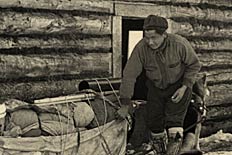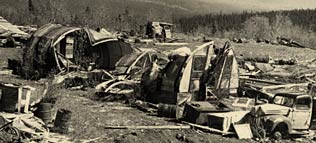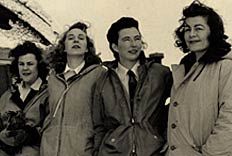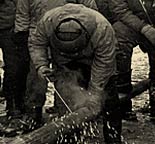The short-lived Pipeline with a lasting legacy
...packing sleds at Sheldon Lake, 1943.
(view more details)

As for the operation of Canol, oil flowed through the pipeline from April, 1944 until it was shut down the following March. It was estimated that 1,858,000 barrels of crude reached the Canol refinery in Whitehorse. This figure has been disputed - many sources feel that the amount was less than half that. Canada did not exercise its option to buy the facilities and the refinery was dismantled and shipped to Alberta in 1948. Most of the pipe was torn up and sold for scrap.
Reminders of the Canol project in Yukon include these abandoned trucks on the Canol Road. Abandoned trucks with a child standing beside one of them. ca. 1970s.
(view more details)

This was the first oil pipeline to be built in the north and there was no knowledge or consideration of possible environmental damage. The pipeline was destructive to the environment in that it disturbed permafrost, causing flooding and erosion. There were oil spills resulting from cracked pipe and repeated breaks from fast-tracked welding. A storage tank on the banks of the Mackenzie River also burst while two-thirds full, sending its contents into the water. Forest fires, set accidently or deliberately for smudge purposes, burned out of control during the summer of 1943.
An abandoned military camp on the Canol Road, Yukon. (view more details)

The project was conceived in haste with the prospect of imminent enemy invasion along the coast. It was carried out without consultation, and the methods used left a legacy of information about construction problems in the fragile northern environment.
...Women from all over the United States and Canada came to complete the administrative work necessary for the Alaska Highway and Canol projects. (view more details)

Today, the Canol Road is a seasonal road used in summer months to gain access between Johnson’s Crossing to Ross River and from Ross River to the wilderness of the eastern central Yukon.



